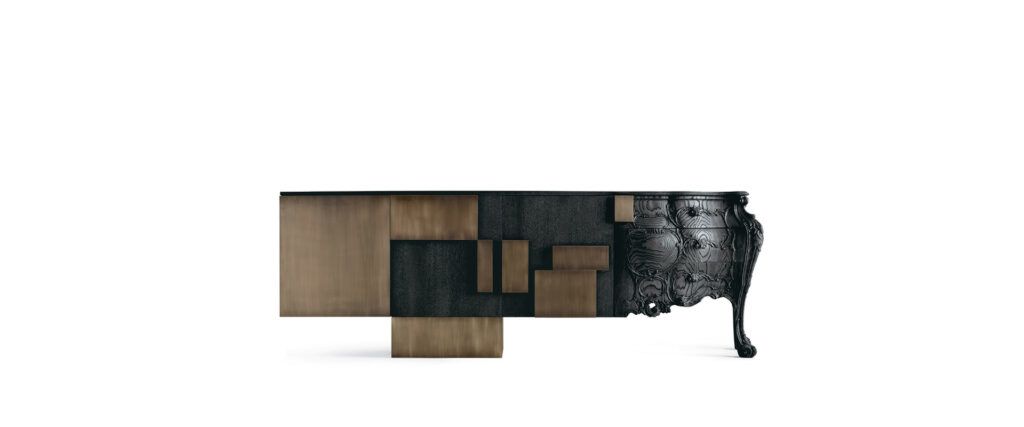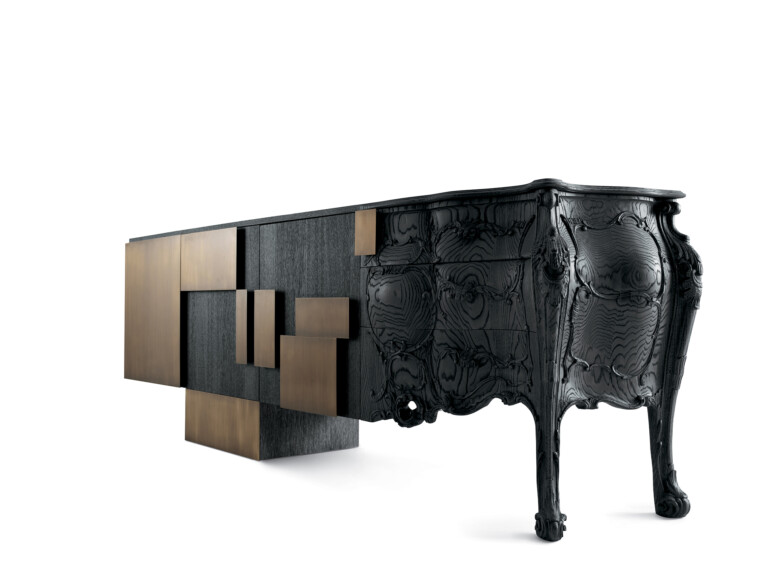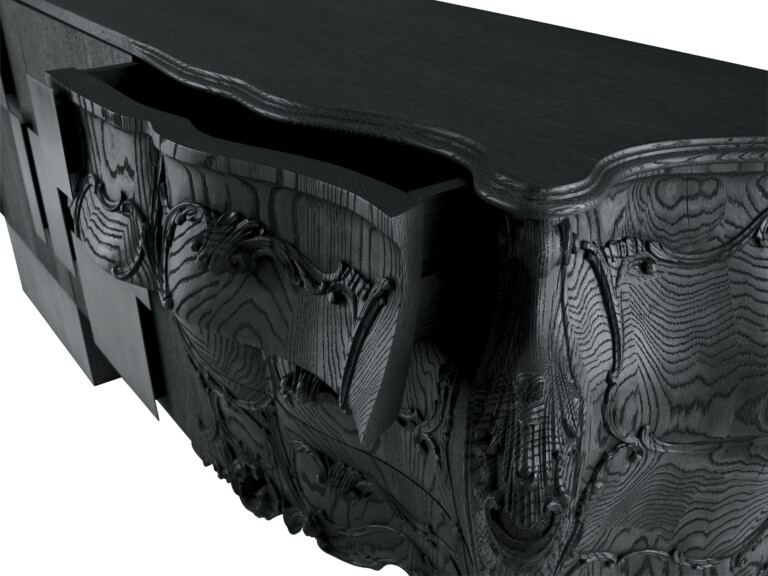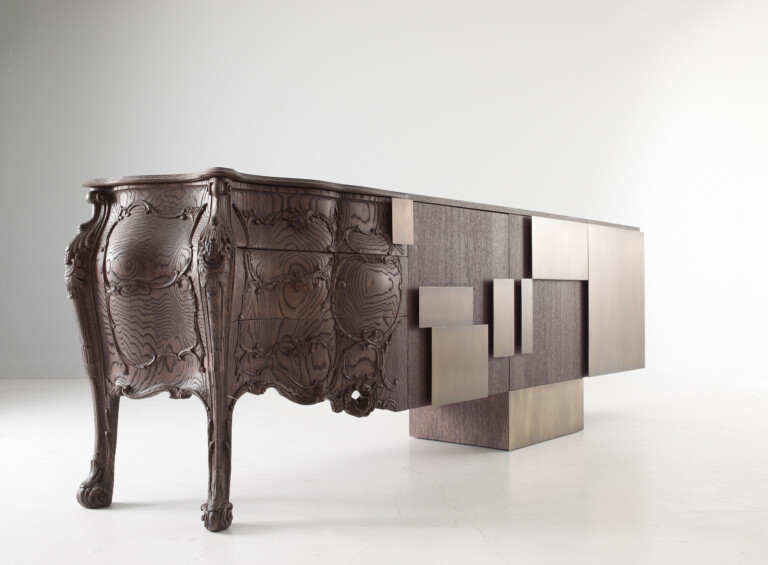Evolution Sideboard Combines Historic + Modern Style

Could two halves of one furniture design be crafted more differently? What starts as an ornate, highly decorated antique looking wooden dresser on one side transforms into the most abstract, minimalist and modern-looking of wood storage cabinets on the other.

In short, though both sides can be seen to belong to specific historic stylistic periods, there is a way in which they represent opposite aesthetics as different as postmodern paintings and ancient cave carvings – conceptually as far apart as art and/or design can get.
Despite the actual space of transition between the ancient- and ultramodern-looking pieces of this unlikely whole, there is something smooth about the transition – assisted by a few key points of physical overlap and the continuation of color from the hand-carved half to the through to parts of the machine-built half.

Designed by Ferruccio Laviani for Emmemobili , the aptly named ‘Evolution’ oak sideboard may be the strangest attempt to fuse styles from separate centuries into a single, mass-produced and market-ready furniture object.
“A unique and iconic element of great strength, Evolution transfers to the viewer the power of the evolution that the world of wooden furniture has undergone in recent decades. From the large, hand-carved decorations representing the fine cabinet-making that made the classical style possible in all its richness, to the formal cleanliness of dry, rigorous volumes of a more rationalist, current trend.”

About designer Ferruccio Laviani:
“Born in Cremona in 1960, he studied at the Istituto Professionale Internazionale per l’Artigianato Liutario e del Legno di Cremona and received his diploma in 1978. He then went on to attend the Politecnico di Milano Architecture Faculty and graduated in 1986, after studying on the courses taught by Achille Castiglioni and Marco Zanuso. During this period he also studied at the Politecnico di Design di Milano, a private school from which he received his diploma in 1984. In 1983, he began working at Studio De Lucchi, becoming a partner in 1986 and leaving the firm in 1991 to open his own Studio in Milan.”
“He works as an architect in the areas of product design, interior design, art direction and graphics. He has been Art Director at Kartell since 1991 and has held this position for various other companies including Flos, De Padova, Foscarini, Moroso, Society (Limonta) and Emmemobili.”




